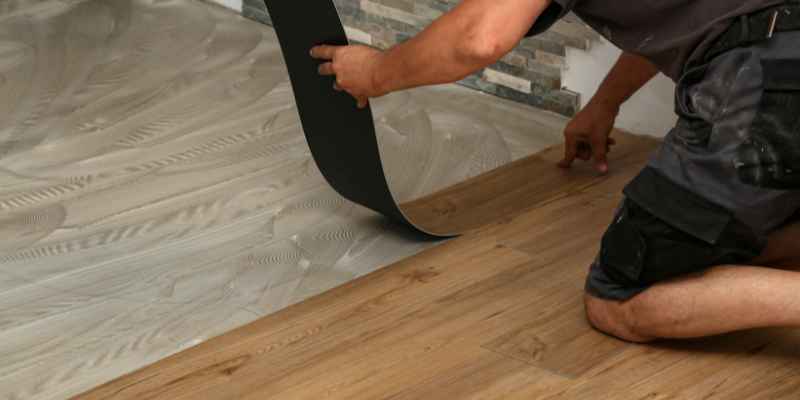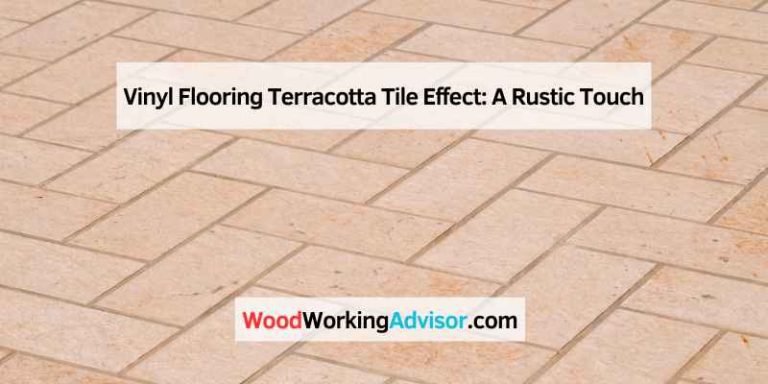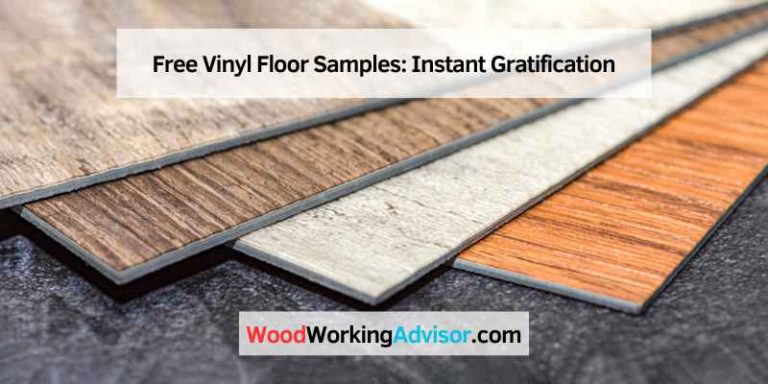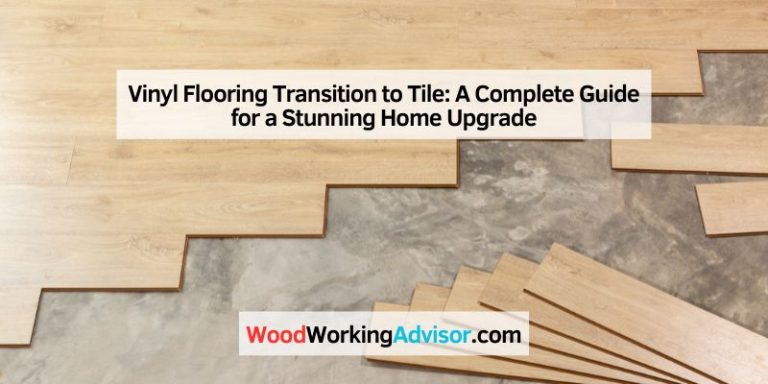Can You Tile on Top of Vinyl Flooring: Quick & Easy Tips
Yes, you can tile on top of vinyl flooring as long as the vinyl is in good condition and well-adhered to the subfloor. It’s important to ensure a clean and level surface for proper adhesion.
When it comes to home renovations, updating your flooring can make a significant impact on the overall look and feel of your space. If you have vinyl flooring and are considering a switch to tile, you might be wondering if you can simply tile over the existing vinyl.
The good news is that in many cases, it is possible to install tile directly on top of vinyl flooring. This can save time and money, as you won’t have to go through the labor-intensive process of removing the vinyl before installing the new tile. However, there are some important considerations and steps to follow to ensure a successful and long-lasting result. We will explore the process of tiling over vinyl flooring, including preparation steps and key factors to keep in mind for a professional-looking outcome.
Introduction To Tiling Over Vinyl
Yes, you can tile over vinyl flooring by ensuring it’s clean and well-adhered. Clean the surface thoroughly to enhance adhesion before installing tiles. Properly preparing the vinyl surface is crucial for successful tiling over vinyl.
If you’re considering a flooring upgrade and wondering if you can tile on top of vinyl flooring, you’ve come to the right place. Tiling over vinyl can be a cost-effective and convenient way to transform your space without the need for extensive removal or demolition. In this article, we will explore the pros and cons of tiling over vinyl and provide guidance on assessing the condition of your vinyl flooring before proceeding with the installation.
Pros And Cons
Before you decide to tile over vinyl flooring, it’s essential to understand the advantages and disadvantages of this approach. Here are some key points to consider:
Pros:
- Cost-effective: Tiling over vinyl can save you money by eliminating the need to remove and dispose of the existing flooring.
- Convenience: The process of tiling over vinyl is generally quicker and less labor-intensive compared to removing the vinyl and preparing the subfloor.
- Design flexibility: With a wide range of tile options available, you can achieve the desired look and style for your space.
- Durability: Tile is known for its durability and longevity, making it a suitable choice for high-traffic areas.
Cons:
- Height difference: Tiling over vinyl can result in a slight increase in the floor height, which may require adjustments to doors and transitions.
- Subfloor condition: If the vinyl flooring is not well-adhered or in poor condition, it can affect the overall stability and longevity of the tiled surface.
- Moisture issues: Vinyl flooring may not provide adequate moisture protection, so it’s crucial to ensure proper waterproofing measures are in place before tiling.
Assessing Vinyl Condition
Before proceeding with tiling over vinyl, it’s essential to assess the condition of the existing flooring. Here are some steps to follow:
- Clean the surface: Remove any dirt, grease, wax, or other contaminants from the vinyl surface. This will ensure better adhesion of the tiles.
- Inspect for damage: Check for any signs of damage, such as cracks, tears, or loose edges. Repair or replace any damaged areas before tiling.
- Test adhesion: Verify that the vinyl is well-adhered to the subfloor by performing a simple adhesion test. Press down firmly on various areas of the vinyl; if it feels loose or lifts easily, it may not be suitable for tiling over.
By carefully assessing the condition of the vinyl flooring, you can determine whether it is suitable for tiling over or if removal and subfloor preparation are necessary.
In conclusion, tiling over vinyl flooring can be a viable option, offering convenience and cost savings. However, it’s crucial to weigh the pros and cons, as well as assess the condition of the vinyl, to ensure a successful and long-lasting tile installation.
Preparation Is Key
To tile on top of vinyl flooring, ensure the vinyl is in good condition and securely attached. Thoroughly clean the surface to remove any dirt or residue for proper adhesion. Following these steps will help you successfully install tiles over vinyl flooring.
Cleaning The Vinyl Surface
To successfully tile over vinyl flooring, proper preparation is essential. Begin by thoroughly cleaning the vinyl surface to ensure good adhesion of the tiles. Use a trisodium phosphate (TSP) solution to remove any dirt, soap residue, grease, wax, or other contaminants that may affect the bond between the tiles and the vinyl surface. This step is crucial for achieving a smooth and durable tile installation.
Scuffing For Better Adhesion
In addition to cleaning the vinyl surface, scuffing it up is another important step in preparing for tile installation. Scuffing the surface helps improve the adhesion of the tiles to the vinyl. You can use sandpaper or a floor buffer with a sanding screen to lightly roughen the surface. This process creates a slightly textured surface, allowing the thin-set adhesive to grip the vinyl better and ensuring a stronger bond between the tiles and the flooring.
Once you have cleaned and scuffed the vinyl surface, it is crucial to allow it to dry completely before proceeding with the tile installation. This ensures that the adhesive will adhere properly and prevents any moisture-related issues that could affect the longevity and stability of the tiles.
By following these preparation steps, you can ensure a successful tile installation over vinyl flooring. Properly cleaning the vinyl surface and scuffing it for better adhesion will help create a strong bond between the tiles and the vinyl, resulting in a durable and long-lasting tile floor.
Choosing The Right Materials
Yes, you can tile on top of vinyl flooring if it is in good condition and well-adhered. Ensure the surface is clean and free from any contaminants to ensure good adhesion. Prepare the vinyl flooring by cleaning it thoroughly and allowing it to dry before tiling.
Selecting Appropriate Thinset
When it comes to tiling over vinyl flooring, one of the most important factors to consider is choosing the right thinset. Thinset is a type of cement-based adhesive that is used to bond the tiles to the surface. It is essential to select the appropriate thinset to ensure that the tiles adhere properly to the vinyl flooring.
Most manufacturers have developed a specialty thinset for setting tile that bonds well to sheet vinyl. However, it is crucial to ensure that the entire subfloor below the tile is in good condition and well-prepared to accept the thinset.
Understanding Mortar Options
Mortar is another type of adhesive that can be used to install tiles over vinyl flooring. It is a mixture of cement, sand, and water that creates a strong bond between the tiles and the surface.
When it comes to mortar options, there are two main types: modified and unmodified. Modified mortar contains additives that enhance its bonding properties, making it ideal for tiling over vinyl flooring. Unmodified mortar, on the other hand, is more suitable for use on concrete or cement backer board substrates.
It is crucial to understand the differences between these two types of mortar and select the appropriate one for the job. Using the wrong type of mortar can lead to a weak bond between the tiles and the surface, resulting in tiles that come loose or crack over time.
In conclusion, choosing the right materials is essential when tiling over vinyl flooring. Selecting the appropriate thinset and understanding mortar options are critical factors to consider to ensure a strong and long-lasting bond between the tiles and the surface. By following these guidelines, you can successfully install tiles over vinyl flooring and achieve a beautiful and durable tiled surface.
Installation Techniques
Applying Thinset Effectively
Ensure vinyl floor is clean and smooth for good adhesion. Use specialty thinset for sheet vinyl bonding. Subfloor beneath tile is crucial for successful installation.
Laying Tiles Accurately
Begin by leveling the existing vinyl surface. Clean thoroughly with TSP to remove any residue. Allow it to dry completely before laying tiles for a smooth finish.
Ensuring A Level Surface
When it comes to tiling on top of vinyl flooring, one of the key factors to consider is ensuring a level surface. A level surface is crucial for a successful tile installation as it ensures that the tiles lay flat and adhere properly, preventing any issues such as cracking or unevenness in the future. In this section, we will explore two important aspects of ensuring a level surface: using leveling systems and dealing with uneven areas.
Using Leveling Systems
Leveling systems are a valuable tool for achieving a level surface when tiling over vinyl flooring. These systems consist of various components such as leveling clips, wedges, and pliers, which work together to eliminate any unevenness or lippage between tiles. By using leveling systems, you can ensure that each tile is perfectly aligned with the surrounding tiles, creating a seamless and professional-looking finish.
Here are some key steps to follow when using leveling systems:
- Start by preparing the vinyl surface by cleaning it thoroughly. Remove any dirt, grease, or wax that may affect the adhesion of the leveling system.
- Apply a layer of thin-set adhesive on the vinyl surface using a trowel, making sure to spread it evenly.
- Place the leveling clips under the edges of the tiles, ensuring they are positioned properly to create a level surface.
- Insert the leveling wedges into the clips and use the pliers to tighten them, applying gentle pressure to level the tiles.
- Allow the thin-set adhesive to dry completely before removing the leveling clips and wedges.
- Finally, proceed with grouting the tiles and completing the installation process.
Dealing With Uneven Areas
In some cases, you may encounter uneven areas on the vinyl flooring that require special attention before tiling. Uneven areas can be caused by factors such as dips, bumps, or damaged sections of the vinyl surface. It is essential to address these issues to ensure a level surface for your tile installation.
Here are some methods to deal with uneven areas:
- If the unevenness is minor, you can use a self-leveling compound to fill in the gaps or depressions. Follow the manufacturer’s instructions for mixing and applying the compound.
- In case of larger uneven areas, you may need to consider removing the vinyl flooring and leveling the subfloor before proceeding with the tile installation.
- Alternatively, you can use a thick-bed mortar to level out uneven areas. Apply the mortar using a trowel, ensuring that it is spread evenly and at the appropriate thickness.
- Always make sure to let any leveling compounds or mortars dry completely before tiling over them.
By addressing uneven areas and utilizing leveling systems, you can ensure a level surface when tiling on top of vinyl flooring. Taking the time to properly prepare the surface will result in a beautiful and long-lasting tile installation.
Grouting And Finishing Touches

Once the tiles are laid on top of the vinyl flooring, the next crucial step is grouting and applying the finishing touches. Proper grouting not only enhances the aesthetics of the tiled surface but also ensures the durability and longevity of the installation.
Mixing And Applying Grout
When it comes to grouting, it’s essential to start with the right mixture. Follow the manufacturer’s instructions to mix the grout to the correct consistency. Use a grout float to apply the mixture, ensuring that the grout fills the spaces between the tiles completely.
Achieving Clean Grout Lines
To achieve clean and uniform grout lines, it’s crucial to wipe off excess grout from the tile surfaces before it dries. Use a damp sponge to gently clean the tiles and smooth out the grout lines. Repeat the process until the grout lines are neat and uniform.
Aftercare And Maintenance
Yes, you can tile on top of vinyl flooring as long as it is in good condition, level, and well-adhered to the subfloor. Before tiling, make sure to clean the surface thoroughly to ensure good adhesion. It is also important to use the appropriate thinset for setting the tiles.
Proper Cleaning Post-installation
After tiling over vinyl flooring, proper cleaning is crucial. Use a mild detergent and warm water to clean the tiles. Avoid harsh chemicals to prevent damage.
Long-term Maintenance Tips
For long-term maintenance, regularly sweep or vacuum the tiled area. Use a gentle cleaner for tougher stains and avoid abrasive tools that can scratch the tiles.
Common Mistakes To Avoid
When considering tiling on top of vinyl flooring, ensure the surface is clean, level, and securely adhered. Properly clean to remove any contaminants that may affect adhesion. Confirm the vinyl is in good condition to provide a suitable base for the new tiles.
Ignoring Subfloor Issues
If the subfloor is not properly prepared, it can lead to tile installation failures.
Skipping Necessary Prep Work
Properly cleaning and priming the vinyl flooring is crucial for ensuring good adhesion of the tiles.

Frequently Asked Questions
Can You Put Tile Over Vinyl Flooring?
Yes, you can tile over vinyl flooring if it is in good condition, level, and well-adhered to the cement underlayment. Before tiling, clean the surface thoroughly to remove any dirt, grease, wax, or other contaminants that could affect adhesion. Additionally, ensure that the entire subfloor is sound and stable for a successful tile installation.
Proper preparation and examination are crucial for a smooth and even finish.
Will Thinset Stick To Vinyl Flooring?
Yes, thinset can stick to vinyl flooring if the vinyl is in good repair, level, and well-adhered to the subfloor. It is important to clean the surface thoroughly to ensure proper adhesion. Manufacturers have developed specialty thinset products that bond well to sheet vinyl.
However, the condition of the entire subfloor is also crucial for a successful tile installation.
How Do You Prepare Vinyl Flooring For Tile?
To prepare vinyl flooring for tile installation, follow these steps: 1. Clean the vinyl floor thoroughly with TSP to remove dirt, soap, and oil residue. 2. Ensure the floor is smooth and free of any imperfections. 3. Let the floor dry completely before continuing.
4. Thoroughly clean the vinyl with plain water and let it dry. 5. Apply a thin-set adhesive to ensure good adhesion of the tiles to the vinyl surface. By following these guidelines, you can successfully prepare vinyl flooring for tile installation.
Can You Tile Directly Over Linoleum?
Yes, you can tile directly over linoleum as long as both the linoleum and substrate are in good condition and stable. It’s important to clean the surface thoroughly and remove any contaminants that could affect adhesion. Use a specialty thinset that bonds well to sheet vinyl for best results.
Conclusion
Tiling over vinyl flooring is possible if the vinyl is in good condition and properly prepared. Clean the surface thoroughly and ensure it’s free from any contaminants. Using the right adhesive is crucial for a successful tile installation. Always follow the manufacturer’s guidelines for the best results.







